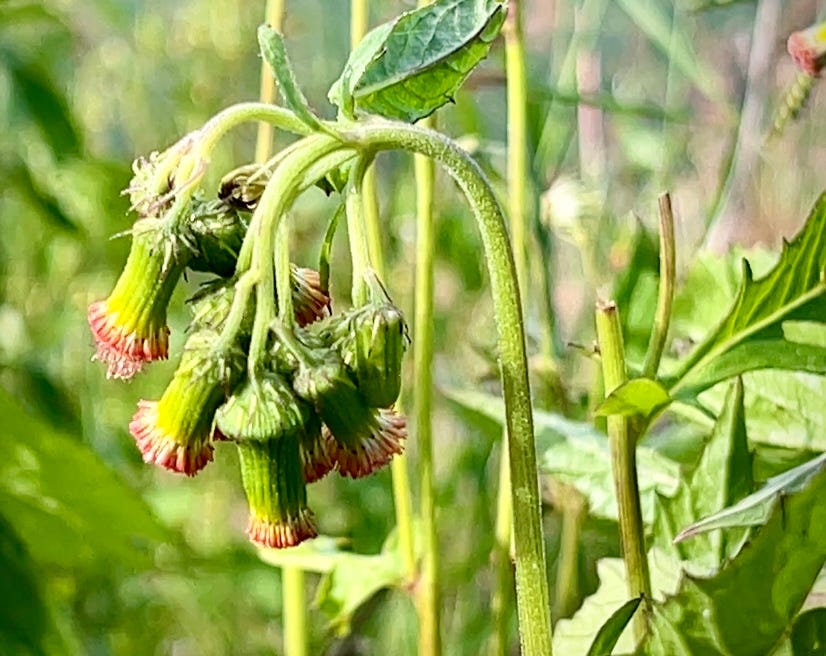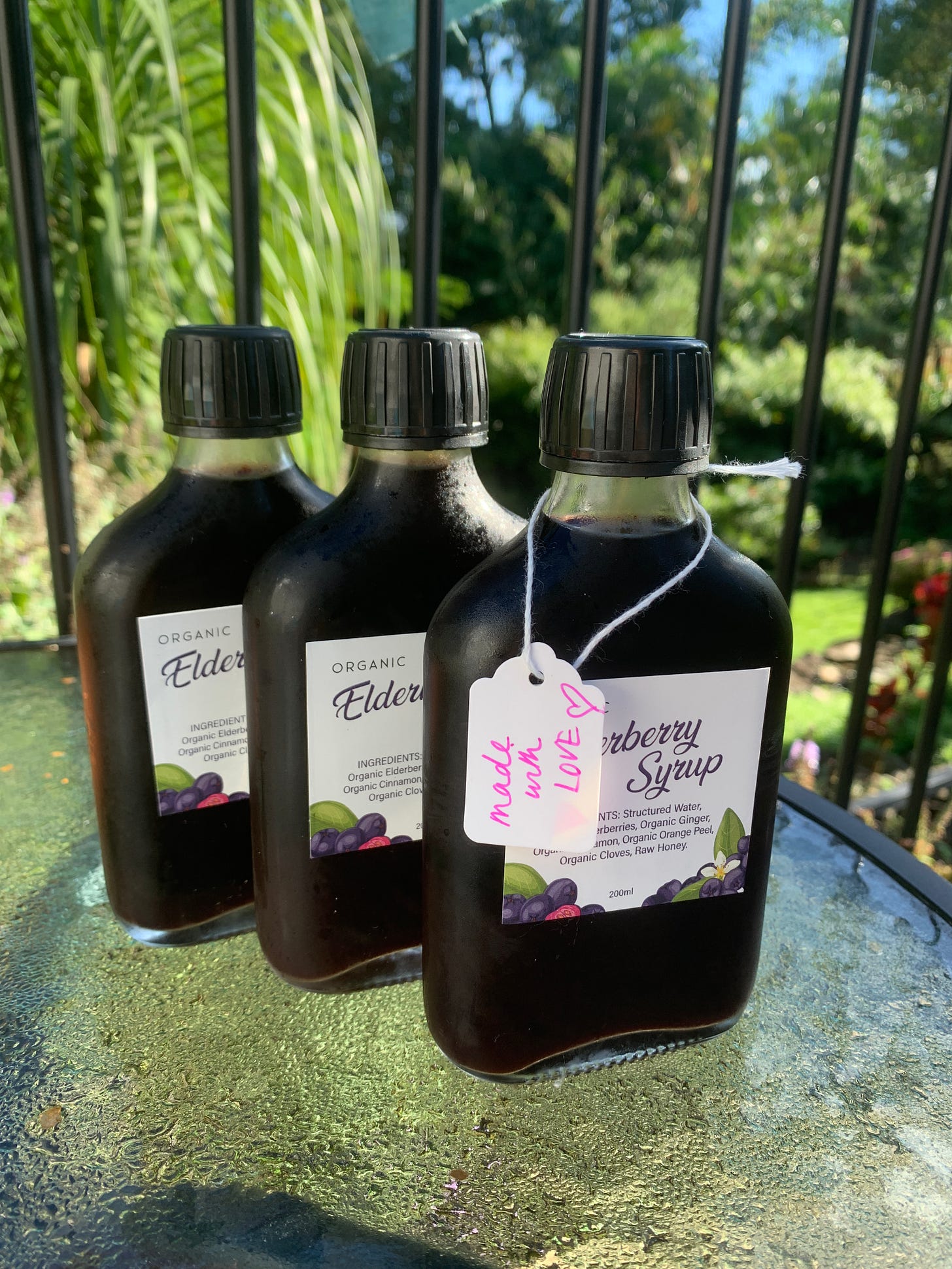Nodding Top Monograph
And Elderberry syrup now available
Nodding Top
Common name: nodding top, thickhead, ragweed
Species: Crassocephalum crepidioides
Genus: Crassocephalum
Family: Asteraceae
Nutrients
Protein (esp. tyrosine), calcium, magnesium, potassium, iron and vitamin C.
Culinary use
Leaves have a carrot-like taste and are quite pleasant eaten raw in salads or lightly cooked. Young plants are a common food in Japan, especially in the Okinawa Islands, where the population is renowned for its health and longevity, and where it has the common name of Okinawan spinach.
It is used as a vegetable in soups and stews, especially in West and Central Africa. In south-western Nigeria, the leaves are lightly blanched, then cooked with peppers, onions, tomatoes, melon and sometimes fish or meat, to make soups and stews. In Sierra Leone, the leaves are popular and are made into a sauce with groundnut paste.
In Australia, it is eaten as a salad green, either cooked or raw. In Thailand, roots are eaten with chilli sauce.
Folk medicine
In Africa, the leaves are used for indigestion, headaches, fresh wounds, nosebleeds and sleeping sickness. The roots are used in the treatment of swollen lips. The leaves are used to treat indigestion. The leaf sap is given to treat upset stomach. A leaf infusion is used to treat headaches. The leaf sap is combined with Cymbopogon giganteus and is used orally and externally for the treatment of epilepsy.
Applied externally, the leaf sap is used as a treatment for fresh wounds. The dried leaf powder is applied as a snuff to stop nose bleeding, and smoked to treat sleeping sickness. Tannin found in the roots of the plant is used to treat swollen lips. In China, decoctions of the whole plant are used internally for colds, fevers, dysentery, gastroenteritis and urinary tract infections. Externally it is used for mastitis.
Research
Clinical trials have confirmed its use in the following areas; antioxidanti, hepatoprotectiveii, neuroprotectiveiii, anticoagulantiv, antidiabeticv, anticancervi and wound healingvii.
How to use it as medicine
Mainly it is eaten as a food, but medicinally it can be used as a maceration to extract the sap, as an infusion (leaves) or decoction (roots), as a tincture, or as a powder which is eaten, snuffed or smoked.
Cautions and contraindications
Due to the presence of pyrrolizidine alkaloids, Crassocephalum crepidioides should not be used by those with liver disease or pregnant women.
Elderberry Syrup Now Available
As we head into the colder months, Elderberry syrup is a potent cold and flu remedy to have on hand. Elderberries are naturally high in immune-boosting compounds that help with colds and flu and support the immune system.
At a party on the Sunshine Coast I recently met a beautiful lady called Nicole, who is making and selling elderberry syrup.
This is something people often reach out and ask me for so I thought I’d share it with you.
Nicole's elderberry syrup is all organic ingredients (dried elderberries, ginger, cinnamon quills, ginger, cloves, orange peel, star anise, raw honey and filtered water) and you can purchase a 200ml bottle for $20 or 3 bottles for $50. (Such a bargin!!!)
Please contact Nicole direct on 0410891612 if you would like to place an order for this beautiful natural medicine.
I would like to acknowledge the Kabbi Kabbi/Gubbi Gubbi peoples on who’s lands I live and work. I acknowledge that sovereignty was never ceded and pray this truth be acknowledged and respected by all who live, work and govern these lands.




